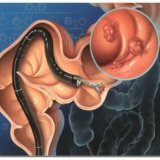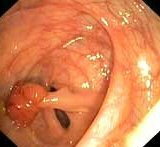Pain in coccyx and anal-coccygeal suppuration
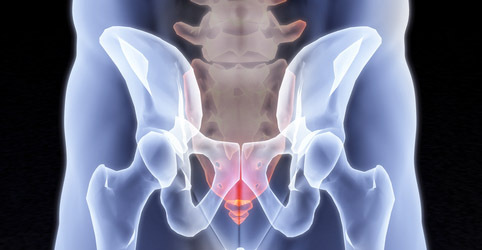
Pain syndromes in the anal-coccygeal region occur quite often, which is associated with a large number of factors capable of provoking such a symptom.The most common cause of pain in the coccyx is traumatic injury, which can affect neighboring organs.When there is a violation of blood supply in the coccyx, favorable conditions for the development of infectious processes are created.With prolonged course, patients may develop fistulas and abscesses.
Table of contents: Epithelial coccygeal path Other causes of anal coccygeal suppuration What is anal-coccygeal pain syndrome Causes of pain in coccyx Main symptoms of coccygeal pain Diagnosis of pain in coccyx Methods of treating anal-coccygeal painEpithelial coccygeal path
Recommended reading:In medical practice, anal-coccygeal suppuration belongs to the field of proctology, despite the fact that quite often they are not directly related to the anal openingiem or rectum.It is a case of suppuration with such a congenital anomaly as the epithelial coccygeal passage( an intracutaneous canal near the interannual fold), the holes of which can be located near the anus, representing a fistula of the rectum.
In the lower opening of the coccygeal locus, the hair is hairs.This developmental anomaly is caused by an incomplete reduction of the tail muscles.In this area, in the embryonic period, the fetus has a peculiar skin retraction, from which the coccygeal course is gradually formed.Available hairs regularly become infected during feces, which leads to inflammatory changes and suppuration with the formation of fistula.
Please note! More than 50% of patients with coccygeal pathway and there is another anomaly - non-healing of the arch of the coccygeal and sacral vertebrae.
Since the hole of the stroke is located in the immediate vicinity of the anus, its inflammation is found in clinical practice very often.The abscess can appear independently, in other cases treatment is required, suggesting a surgical opening of the abscess.
However, even after all manipulations, if you do not remove the primary opening of the coccygeal, there will be a fistula that can be re-inflamed.The chronic course of the pathology leads to the fact that cicatricial changes and fistulas cover almost the entire region of the coccyx and sacrum.
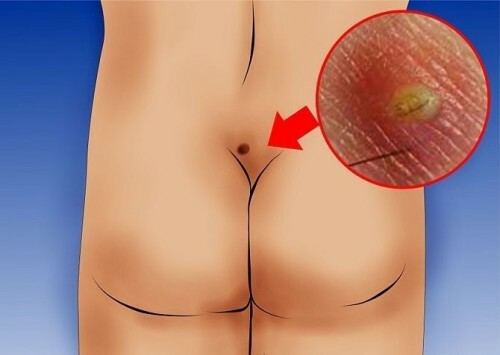 In very rare cases, a fistula of the rectum can open in the coccyx with an inflammatory disease such as paraproctitis.In any case, suppurative complications require competent operative treatment with preliminary antiseptic treatment of fistulous passages and opening of infiltrates.
In very rare cases, a fistula of the rectum can open in the coccyx with an inflammatory disease such as paraproctitis.In any case, suppurative complications require competent operative treatment with preliminary antiseptic treatment of fistulous passages and opening of infiltrates.
Surgical intervention in this pathology consists in the operative excision of the existing fistula and the coccygeal path.In some cases, for such correction, the surgeon needs to make lateral incisions.It is very important to cut the lowest running hole, located above the edge of the anus.After the operation, the wound is sutured along the middle line.
The postoperative period involves a daily change of dressings.Dressings are recommended to be done every time after bowel movement to avoid infection.
Other causes of anal-coccygeal suppuration
In addition to the epithelial coccygeal path, sometimes the ASN36ASD
- is benign congenital cysts that can be inflamed and fester in case of traumatic injuries.Treatment of such anal-coccygeal suppuration involves a one-time surgical removal of the tumor and fistula;
- endocrine disorders that provoke purulent hydradenitis with the formation of small fistulas in the buttocks and groin.
A characteristic feature of fistulas is the allocation of unpleasantly smelling mucus from them, as well as painful sensations.Treatment of pathology should be conducted after consultation with a dermatologist and endocrinologist.
What is the anal-coccygeal pain syndrome
Anal coccygeal pain in modern proctology is customarily identified as a separate problem, within the framework of which is considered the proctalgia( pain in the rectum) and coccidia( coccygeal pains).Some patients have a combination of these two syndromes.
With a standard examination of patients, no pathology is observed in the structure of the anal canal, coccyx and sacrum.Pains of inorganic origin can have a long or periodic nature, be insignificant or very intense, regardless of the nature of the stool and the characteristics of the diet.Treatment of such patients can include both standard schemes with the use of medications, and methods of alternative medicine, for example, osteopathy.
Anal coccygeal pains occur in people with neuralgia of sacral roots or prescalar plexuses.Very often, the pain syndrome accompanies hemorrhoids, proctosigmoiditis, papillitis and other pathological conditions, including those not directly related to the rectum and sacrococcygeal zone( inflammation of the prostate, osteochondrosis, uterine pathology in women, etc.).Also, its appearance is possible in the rehabilitation period after surgical interventions in the field of anus and traumatic injuries.
For the anal-coccygeal pain syndrome, long-term pains occur spontaneously and also spontaneously disappear.Some patients suffer from periodic severe pain over several years.Painful sensations can weaken or on the contrary become more intense when changing the posture, straining, motor activity, palpation.
For a proctologist, identifying the exact causes of anal-coccygeal pain is a very difficult task, which determines the choice of tactics for treating a pathological condition.
The causes of pain in the coccyx
Pain in the anal-coccygeal region can occur as a consequence:
-
 Any traumatic damage to the coccyx, for example, a bruise or fracture.In this case, even an old trauma can cause a pain syndrome;
Any traumatic damage to the coccyx, for example, a bruise or fracture.In this case, even an old trauma can cause a pain syndrome; - neuromuscular disorder of the pelvic floor and anal region;
- disorders of the spinal column;
- pathology of the rectum( anal fissures, hemorrhoids, proctitis, etc.);
- complications of labor;
- omission of the perineum and genital organs;
- psycho-emotional disorders;
- habits long sit in the toilet when defecating and excessively strain;
- frequent stool disorders, whether it be diarrhea or constipation.
The main symptoms of coccygeal pain
In speaking of the anal-coccygeal pain syndrome, several typical symptoms should be considered:
- coccidium - soreness in the coccyx region;
- anorectal pain, i.e. pain in the anus;
- different character of the pain - dull, aching, sharp, cramping, etc.;
- can be irradiated to the thigh, sacrum, buttocks.
Protalgia ( pain in the rectum) usually occurs suddenly, more often at night and lasts up to half an hour.Attacks of pain have different intervals.In some cases, sexual contact may provoke an attack.In an acute period, pain syndrome can be accompanied by increased sweating and paleness of the skin.
The coccidium is localized in the coccyx zone.If you press on the pathological area, the pain will intensify, and their intensity may increase with physical activity.Often, such painful feelings are combined with a feeling of severe discomfort, heaviness and burning.
If we talk about anorectal neuralgia, the pain in the anus in this state is diffuse.This pathology is very often found in female representatives in the post-menopausal period and occurs in combination with disorders of the nervous system.
Attention! Anorectal neuralgia is a frequent companion of such neurasthenic disorders as neuroses and depressions.
Diagnostics for pain in the coccyx
It is very important to exclude organic diseases accompanied by pains in the rectum and coccyx region( anal fissures, hemorrhoids, proctitis, genital and spine diseases, etc.) during the diagnostic examination.If such pathologies are not identified or their treatment has not brought relief, the diagnosis is "anal-coccygeal pain syndrome".
Patient examination usually includes:
-
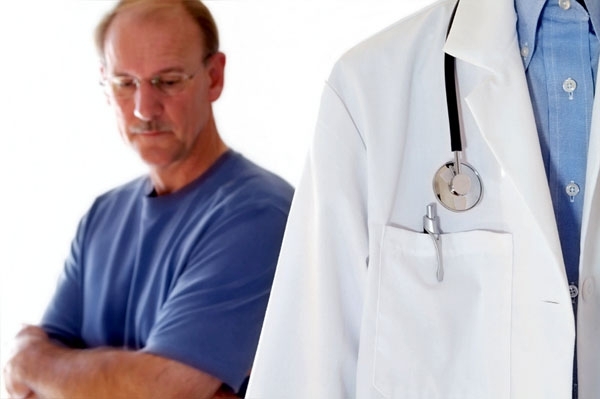 examining a patient in the knee-elbow position, performing a rectal finger examination;
examining a patient in the knee-elbow position, performing a rectal finger examination; - sigmoidoscopy, necessary for a detailed assessment of the mucosal status and elimination of disorders from the large intestine;
- Irrigoscopy - X-ray of the rectum - makes it possible to detect the consequences of trauma to the coccyx and pelvic bones, as well as bone disease;
- electrophysiological study of the sphincter and pelvic floor muscles for the detection of spasmodic muscles;
- laboratory tests: coprogram, stool culture, general urine examination, smear analysis from the vagina or prostatic secret.
Diagnostic examination of patients with anal chestneck pain syndrome may require consultation of such narrow specialists as a gynecologist, andrologist, urologist, traumatologist, neurologist, psychotherapist.
Methods of treatment of anal-coccygeal pains
The success of therapy in this pathological condition depends on the quality of the diagnostic examination performed in order to identify the root causes of the pain syndrome.Treatment may include etiologic therapy aimed at eliminating the main provoking factor, as well as symptomatic and pathogenetic therapy.
Physiotherapeutic methods, such as UHF therapy, ultrasound and laser therapy, the use of therapeutic mud, dynamic currents, etc., have become widespread in the treatment of anal coccygeal pain.
For the local therapy, rectal suppositories and curative enemas with anti-inflammatory and analgesic drugs, as well as neuroblockades are used.Eliminate muscle spasms allows therapeutic massage.If necessary, also a psychotherapeutic correction is performed.
Indications for surgical treatment may be an anal-coccygeal pain syndrome caused by traumatic damage to the coccyx.In such cases, an operation to extrude the coccyx may be performed-resection of the apex with subsequent fixation to the sacrum bone.It should be noted that in the absence of strict indications, surgical intervention can lead to aggravation of the pathological condition, therefore, the operation is performed only after the exact establishment of the traumatic nature of the pain associated with detachment of the tip of the coccyx.
As already noted, the effectiveness of the therapy depends largely on how accurately the cause of the pain was determined.Of course, in the early stages of the development of pathology, the diagnosis is more successful, therefore it is strongly recommended not to postpone a visit to the doctor at the first signs of an anal-coccygeal pain syndrome.
Chumachenko Olga, medical reviewer


